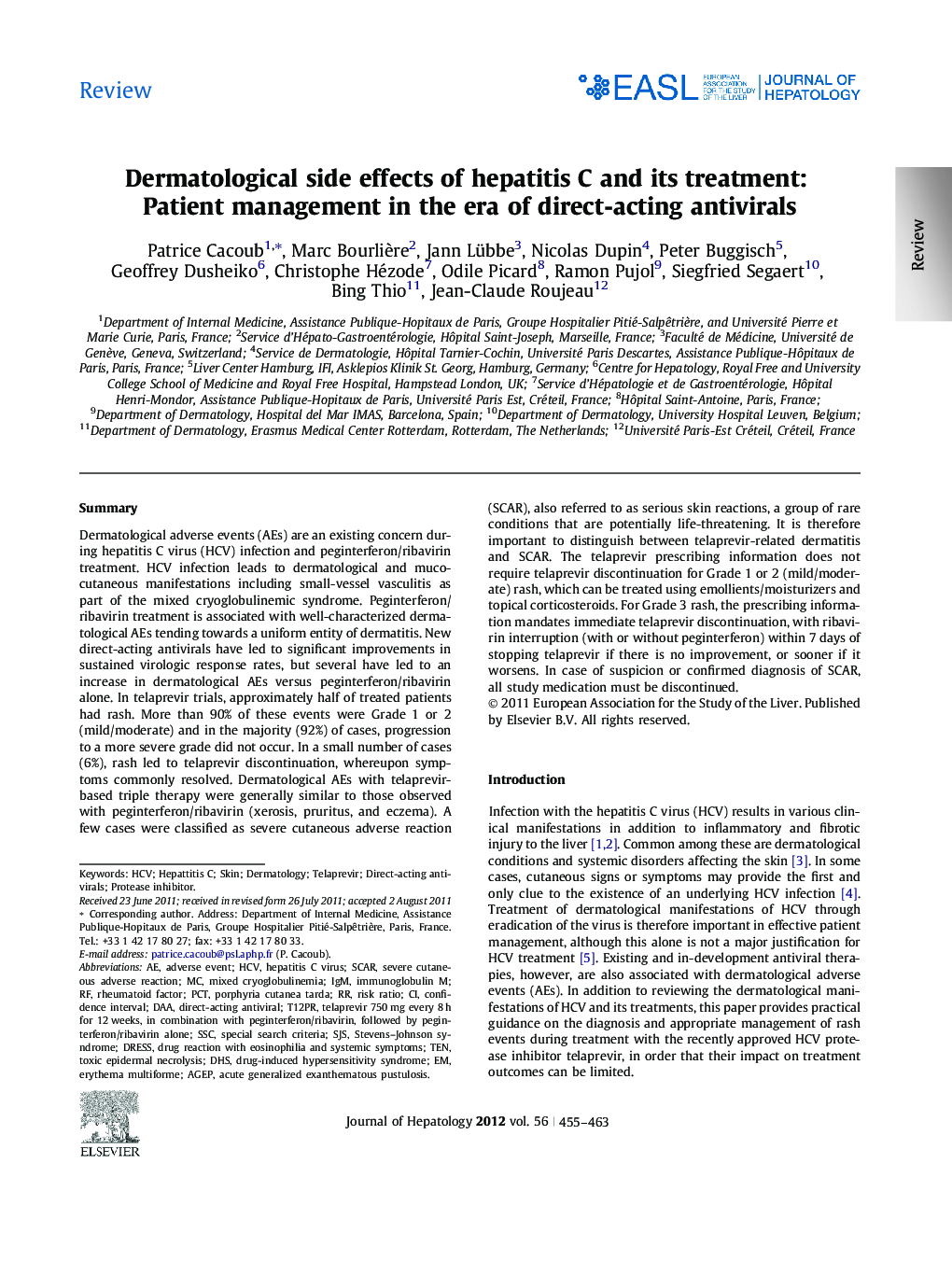| کد مقاله | کد نشریه | سال انتشار | مقاله انگلیسی | نسخه تمام متن |
|---|---|---|---|---|
| 6107148 | 1211170 | 2012 | 9 صفحه PDF | دانلود رایگان |

SummaryDermatological adverse events (AEs) are an existing concern during hepatitis C virus (HCV) infection and peginterferon/ribavirin treatment. HCV infection leads to dermatological and muco-cutaneous manifestations including small-vessel vasculitis as part of the mixed cryoglobulinemic syndrome. Peginterferon/ribavirin treatment is associated with well-characterized dermatological AEs tending towards a uniform entity of dermatitis. New direct-acting antivirals have led to significant improvements in sustained virologic response rates, but several have led to an increase in dermatological AEs versus peginterferon/ribavirin alone. In telaprevir trials, approximately half of treated patients had rash. More than 90% of these events were Grade 1 or 2 (mild/moderate) and in the majority (92%) of cases, progression to a more severe grade did not occur. In a small number of cases (6%), rash led to telaprevir discontinuation, whereupon symptoms commonly resolved. Dermatological AEs with telaprevir-based triple therapy were generally similar to those observed with peginterferon/ribavirin (xerosis, pruritus, and eczema). A few cases were classified as severe cutaneous adverse reaction (SCAR), also referred to as serious skin reactions, a group of rare conditions that are potentially life-threatening. It is therefore important to distinguish between telaprevir-related dermatitis and SCAR. The telaprevir prescribing information does not require telaprevir discontinuation for Grade 1 or 2 (mild/moderate) rash, which can be treated using emollients/moisturizers and topical corticosteroids. For Grade 3 rash, the prescribing information mandates immediate telaprevir discontinuation, with ribavirin interruption (with or without peginterferon) within 7Â days of stopping telaprevir if there is no improvement, or sooner if it worsens. In case of suspicion or confirmed diagnosis of SCAR, all study medication must be discontinued.
Journal: Journal of Hepatology - Volume 56, Issue 2, February 2012, Pages 455-463